Diana Laufenberg's What If?
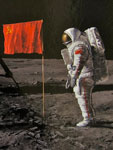
NOTE: Deemed not acceptable for publication
- What if Ben Franklin died in his electricity experiment?
- What if Albert Einstein died before the theory of relativity was released?
- What if Alice Paul and Lucy Burns were assassinated?
- What if the Selective Service Act from World War I was not ratified?
- What if Prohibition was not repealed?
- What if Joseph Kennedy, Jr. lived?
- What if JFK did not come to a diplomatic resolution to the Cuban Missile Crisis?
- What if Ronald Reagan did not survive his assassination attempt?
- What if Britain and the U.S. did not have the Revolutionary War?
- What if Nat Turner did not get caught?
- What if Puerto Rico did not become a U.S. territory?
- What if Amelia Earhart survived her 1937 flight?
- What if segregation in schools was never overturned?
- What if Rachel Carson’s book Silent Spring did not "catch on" and DDT was never banned?
- What if Osama bin Laden died in 1980?
- What if Bill Gates's middle school never bought a computer terminal and made it available to students?
- What if al-Qaeda was successful in the car bombing of the Twin Towers in 1993?
This is a sampling of questions asked by my juniors in their final project for American History. Counterfactual or alternate history is a fringe topic amongst academic historians. However, as a class activity it challenges students to understand history as more than a series of inevitable events. The What If? project focuses on the specific engagement of the individual student with a deep investigation of the historical record. The steps that take the student through the exercise are challenging, couched in research, and steeped in creativity.
- Brainstorm for ideas—think back to the most interesting units of study from the past year as a place to start; what are you most curious about in American history? The goal is to establish the Point of Divergence (POD).
- Investigate 2–3 PODs for the project.
- Choose one POD and fill out the contract for completing the project.
- Receive the graphic organizer that serves as a one-stop shop for writing down the pieces of the project. You will fill this out as you work through the project.
- Identify at least three primary source documents that PRECEDE your POD. (This establishes students' understanding of the historical record leading up to their PODs.)
- Use the National Archives Primary Source Document Analysis Worksheets to analyze your primary sources.
- Brainstorm three NEW events to add to the altered timeline that results after the POD.
- Create two primary source documents for each new event, to establish the events as 'real.'
- What did you like about this project?
- What was most challenging?
- Describe the most interesting fact or event that you investigated.
- How do the actions of individuals impact the historical record?
- How do systemic changes impact the historical record?
- How influential can one decision be in the historical landscape?
- How could this project be improved?
- If you had it to do over, what would you change about your process for the project?
Finally, after they complete these eight steps, students use all the pieces amassed on their graphic organizers to pull together multimedia projects that utilize each piece of their evidence, real and created, in order to represent 2011 as it exists after their PODs. Students then post their work on their blogs and each writes a lengthy reflection. They answer questions including
Many times over I hear the students say things like, "You have no IDEA how much I know about this topic." They push back when I try to poke holes in their logic with events from the historical record; they cite primary sources when I need more proof. Their reflections often are the most telling records of the learning that occurs during this process. They write:
The thing that I found most fun about this project, was coincidentally the same thing I thought was the most difficult, and that was the fact that there were so many different possibilities. It was very fun to see how different events related to one another, and how changing one could set off this long domino effect about all of history. —Dennis
My favorite part of the actual creating of the project was definitely fabricating primary source documents. I felt so cool, like some kind of all-powerful, primary-source-creating being. —Luna
I liked that I had free control to change something in history. It gave me the opportunity to choose something I was passionate about and change it to my liking. On the flip side, it was hard to pick something to change that would give me the outcome I wanted. —Ayanna
I really liked the hypothetical part of this benchmark, it left a lot of room for creativity. I enjoyed making my primary source documents and making up a different future for our country. However, topic choice was definitely the most difficult thing for me. —Emma
What I like about the project was that it made me do a lot of thinking and I learned a lot of history by going out on my own and researching the information that I needed. —Sam
This unit causes my brain to hurt. This project causes my students' brains to hurt. It puzzles, stumps, and perplexes us. Students choose topics poorly but do not realize it until well into the project. I approve a topic that is 'too big' and we are challenged to find a way out as the project comes to a close. There are contracts, organizers, analysis, predictions, and sweat involved in this project. In the end, each student learns. They learn content in an intense and curious manner. They learn skills with an urgency of 'I need to know this right now.' They learn their limitations and challenges in the most instructive of ways. This unit also pushes me in all these ways and more. It pushes me as a teacher and as a constant student of history to be the type of resource they need throughout this project. This is learning in its most messy and beautiful form.
In Ask a Historian, John Buescher looks at how complicated (and ultimately unanswerable) questions of 'what if? can be (here, for World War II history).
Ask students to 'stop action and assess alternatives,' suggests teacher educator Lori Shaller. This teaching strategy can help students realize that history, as it was happening, presented its participants with constant 'what ifs?'
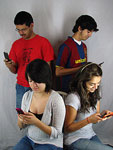
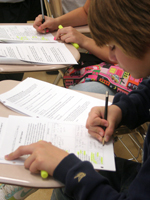
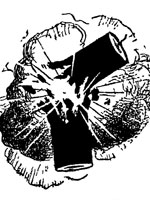


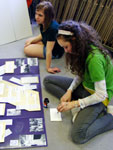
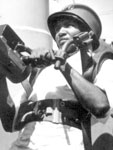
 If none of these resources fit into your curriculum or spark your interests, there's plenty where they came from. Search our
If none of these resources fit into your curriculum or spark your interests, there's plenty where they came from. Search our